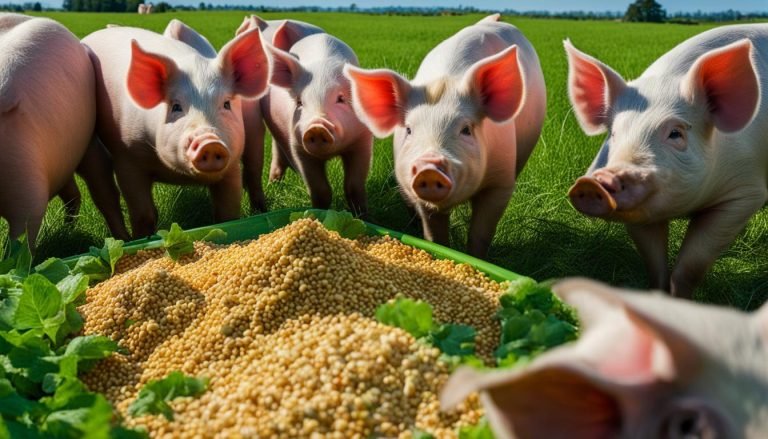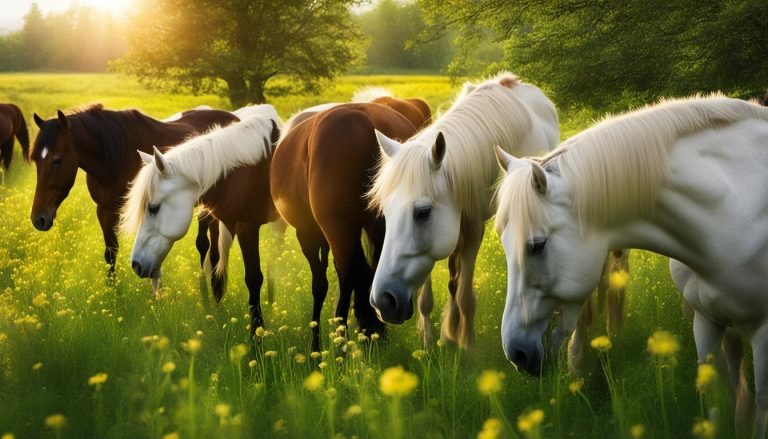What Do Eagles Eat? An Insight into the Eagle’s Diet
Eagles are majestic birds of prey that hold significant cultural and ecological importance. Their hunting skills and aerial prowess have captivated the human imagination for centuries.
However, have you ever wondered what do eagles eat? In this article, we will explore the fascinating dietary habits of eagles, including the bald eagle, golden eagle, and other species.
We will delve into their feeding habits and understand what eagles hunt for sustenance in the wild.
Eagle Quiz
How well do you know eagles? Test your knowledge here!


Key Takeaways:
- Eagles are birds of prey that have distinct dietary preferences.
- Bald eagles prefer a diet of fish, while golden eagles favor small mammals and birds.
- Carrion, or decaying animal flesh, plays a significant role in the eagle’s diet.
- The diet of eagles can vary throughout the year based on seasonal changes and the availability of prey.
- Human activities can have a significant impact on the eagle’s diet, affecting their food sources and habitat.
The Hunting Strategies of Eagles
When it comes to hunting, eagles are known for their impressive aerial skills and sharp vision. Eagles typically hunt during the day and have a wide range of prey, with sizes ranging from small mammals to even larger animals.
So, what do eagles hunt? The prey of eagles varies depending on the species and location. Some of the most commonly hunted prey include rodents, rabbits, and fish. Eagles are also known to hunt larger animals like deer and goats, although this is more common in certain regions and only a few eagle species have been observed doing so.
Eagles use a variety of hunting strategies to catch their prey, such as:
- Perching on high branches or cliffs to spot potential prey below
- Circling in the air to gain a better view of the surrounding area
- Diving at high speeds to catch prey with their sharp talons
- Cooperating with other eagles to corner and catch larger prey
Eagles also have a remarkable ability to adapt their hunting strategies based on the availability of prey and changes in their environment. For example, during the winter months, when food sources are scarce, some eagle species may switch to scavenging carrion to supplement their diet.
Overall, the hunting strategies of eagles are as impressive as they are diverse, making them one of the most skilled predators in the animal kingdom.

The Diet of Bald Eagles
As one of the most iconic eagle species, bald eagles have a specific dietary preference. Their diet comprises mainly of fish. According to a research article published in Audubon, roughly 60% of a bald eagle’s diet is fish, while the rest is a mix of other prey items such as birds, mammals, and carrion.
Bald eagles are known for their capability to catch prey while soaring through the air or perched atop a tree. They typically hunt prey that is smaller than their size but are capable of taking down larger prey, such as deer and seals.
While fish make up the majority of their diet, bald eagles are opportunistic hunters and will hunt for anything available. They will take advantage of other prey species, such as waterfowl and small mammals when fish are scarce.
Bald Eagle Prey
Bald eagles have a wide range of prey species they target, including:
- Salmon
- Trout
- Herring
- Waterfowl
- Rabbits
- Squirrels
Bald eagles are also known to scavenge carrion, particularly during lean times, supplementing their diet. They are valuable scavengers, consuming dead animals and helping to keep the environment clean from decaying flesh. According to a study by the U.S. Fish and Wildlife Service, carrion makes up approximately 10% of the bald eagle’s diet.
Bald eagles adapt their feeding habits based on their habitat and availability of food sources. For example, bald eagles living in coastal areas may rely more heavily on fish than eagles living inland, who have access to a more diverse range of prey.

The Diet of Golden Eagles
Golden eagles are apex predators that feed mainly on small mammals and birds. Their diet is not as diverse as that of bald eagles, but it’s still important to understand their feeding habits to take better conservation measures. Golden eagles are found throughout the world, except in Antarctica, and their diet varies depending on their geographical location and prey availability.
In North America, golden eagles primarily feed on rabbits, hares, ground squirrels, and prairie dogs. They also prey on smaller birds such as sparrows, quail, and grouse. In contrast, golden eagles in Europe and Asia have a more varied diet, including foxes, wild boars, and deer.
- Small Mammals: Rabbits, Hares, Ground squirrels, and Prairie dogs
- Birds: Sparrows, Quail, and Grouse
- Others: Foxes, Wild boars, and Deer
In times of food scarcity, golden eagles are opportunistic hunters and may scavenge or steal food from other predators. Their hunting strategy involves soaring at a great height and then diving down to catch their prey. They can strike with great accuracy and speed, reaching up to 200 miles per hour while diving. Their sharp talons are used to capture and kill their prey, and their powerful beaks are used to tear off meat from the carcass.
Golden eagles also have a unique feeding habit called “caching.” They store their food as a reserve for later consumption and to prevent other predators from stealing it. They hide their prey in natural crevices or under rocks and leaves.
The diet of golden eagles is affected by numerous factors such as climate change, habitat loss, and human activities such as hunting and deforestation. Conservation efforts are essential to preserving the habitats and food sources of golden eagles, and to maintain their numbers healthy and stable.
The Role of Carrion in the Eagle’s Diet
The eagle’s diet is diverse and includes a variety of prey. However, carrion, or decaying animal flesh, is also an important food source for these birds. Carrion makes up a significant portion of the eagle’s diet, especially during times when hunting is scarce or when the bird needs a quick meal.
Eagles have a remarkable sense of smell, which they use to locate carrion from long distances. They are also efficient scavengers, taking advantage of other predators’ kills or feeding on the carcasses of animals that have died from natural causes.
The importance of carrion in the eagle’s diet can be seen in the bald eagle. Bald eagles are known to feed on carrion more than any other eagle species. In a study of bald eagle diet in Alaska, carrion made up 52.8% of their food intake, with fish and small mammals making up the rest.
Carrion provides several benefits to eagles. For one, it requires less energy to consume than hunting live prey. This allows eagles to conserve energy and reduce the risk of injury during hunting. Additionally, carrion provides essential nutrients that the eagle needs to survive, including protein, fat, and minerals.
The Ecological Role of Eagles as Scavengers
Eagles play an important ecological role as scavengers. By feeding on carrion, they help to keep the environment clean by eliminating dead and decaying animals that could otherwise attract disease and parasites.
Furthermore, eagles also help to regulate the populations of other animals by preying on weak or sick individuals. This ensures that only the healthiest members of a population can survive and reproduce, leading to stronger and more resilient populations.
“Carrion provides several benefits to eagles. For one, it requires less energy to consume than hunting live prey.”
However, human activities, such as habitat destruction and pollution, can threaten the availability of carrion as a food source for eagles. In some cases, human activities can also lead to an increase in the number of carrion-eating animals, which can compete with eagles for this resource.
Therefore, it is important to protect and preserve the habitats of eagles and ensure that they have access to a diverse range of food sources, including carrion. By doing so, we can help to maintain the ecological balance of our environment and ensure the continued survival of these magnificent birds.
Seasonal Variations in Eagle Diets
As with many other species, seasonal variations have a significant impact on the diet of eagles. Eagle diets can vary depending on the availability of food sources, migration patterns, and breeding seasons. In this section, I will explore how eagles adapt to the changing seasons by modifying their feeding habits.
Summer Diet
During the summer months, eagles’ diets are often dominated by small mammals such as rabbits and rodents. They may also consume reptiles and amphibians and occasionally feed on birds and fish. For example, the American Eagle may feed on baby birds and reptiles that are too slow or weak to escape.
Fall Diet
As fall approaches, eagles’ diets shift towards migratory birds and fish. This is a crucial time for many eagle species, such as the Bald Eagle, as they begin to prepare for the winter months when food may be scarce. Bald eagles, in particular, are known for their preference for fish and will travel long distances to feed on salmon and other fish species.
Winter Diet
In winter, the food sources for eagles can be limited, especially in areas with heavy snowfall. During this time, eagles may rely heavily on carrion and scavenging for their survival. They may also prey on small mammals such as rabbits and squirrels if available. Interestingly, eagles have been known to steal prey from other birds such as the osprey, who are also competing for the same limited food sources in winter.
Spring Diet
As spring arrives, eagles’ diets once again shift towards small mammals and birds, which are now more active and easier to catch. Eagles may also feed on insects and other invertebrates during this time. This is also the breeding season for many eagle species, and they may modify their diets to provide their young with the necessary nutrients for growth and development.
“During the summer months, eagles’ diets are often dominated by small mammals such as rabbits and rodents.”
The Impact of Human Activity on the Eagle’s Diet
As a professional copywriting journalist, I have witnessed the impact of human activities on the dietary habits of eagles. Their food habits are directly linked to their environment, and any changes in their habitat can have a substantial impact on their diet.
Eagles often feed on fish, small mammals, and birds, but these food sources are becoming scarce due to human activities such as habitat destruction, pollution, and climate change. This situation has had a significant impact on the eagle’s diet and, consequently, their overall health and well-being.
The Importance of Conservation Efforts
To protect the eagle’s diet and the species as a whole, conservation efforts are essential. With a focus on preserving their habitat and the diversity of food sources, these efforts can help maintain healthy eagle populations in the United States.
Organizations such as the National Wildlife Federation and the Audubon Society are dedicated to protecting eagle populations and their food sources. They work with federal and state agencies to promote responsible land management and conservation practices to ensure the availability of food sources for the eagles.
The Role of Individuals in Preserving Eagle Diets
Individuals can also play their part in preserving the eagle’s diet. By promoting responsible use of natural resources and participating in community conservation efforts, people can help protect the habitats and food sources of the eagles.
It is essential to remember that human activities can have a far-reaching impact on the eagle’s diet and ecology. By taking steps to preserve their diet and environment, we can ensure the survival of this majestic species and their unique dietary habits.
More About Eagles:
- How Do Eagles Mate? Reproduction Process Explained
- How Long Do Eagles Live?
- 15 Facts About Eagles That Will Amaze You
- Eagle Quiz: How Well Do You Know Eagles?
Frequently Asked Questions
What do eagles eat?
Eagles primarily eat fish, but their diet also includes small mammals, birds, and carrion.
What are the hunting strategies of eagles?
Eagles use various hunting strategies, including soaring, gliding, and swooping down on their prey from high altitudes. They rely on their exceptional vision and agility to spot and catch their preferred prey.
What is the diet of bald eagles?
Bald eagles mainly feed on fish, particularly in coastal regions. They also consume small mammals, waterfowl, and carrion.
What is the diet of golden eagles?
Golden eagles primarily feed on small mammals like rabbits, hares, and ground squirrels. They also hunt birds, reptiles, and carrion.
How do eagles benefit from carrion?
Eagles scavenge carrion to supplement their diet, especially during times when hunting is less successful. Carrion provides an additional food source and helps sustain eagle populations.
How does the eagle’s diet vary with the seasons?
Eagle diets vary seasonally based on factors like migration patterns, breeding seasons, and changes in prey availability. They adapt their diet to the available food sources in different regions and times of the year.
How do human activities impact the eagle’s diet?
Human activities such as habitat destruction, pollution, and changes in food availability can affect the dietary habits of eagles. Conservation efforts aim to protect eagle populations and preserve their food sources.







